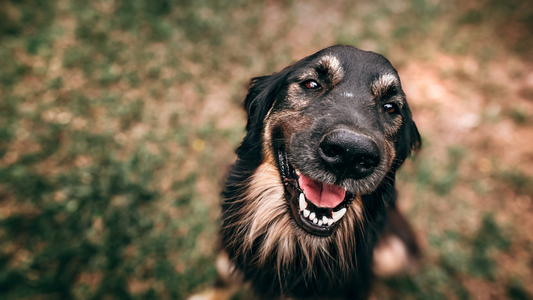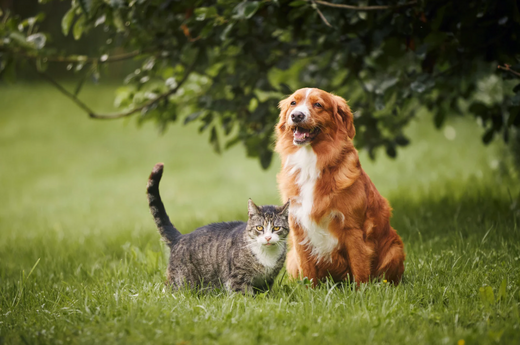Dogs, like humans, can experience a range of feelings, including sadness. Recognising the signs of sadness in your friend is essential for their overall wellbeing. By understanding their body language and behaviour, you can provide the comfort and support they need to feel happier and more secure.
Common Behavioural Signs of Sadness
Decreased Activity Levels
It can be heartbreaking to see your dog feeling low. One of the clearest signs of sadness in dogs is a change in their energy levels. If your normally bouncy pup suddenly seems sluggish, isn't interested in playtime, or drags their paws on walks, it could be a sign that something's bothering them.
Changes in Appetite
Just like us, our dogs can show their feelings through their food. If your dog is feeling down, you might notice changes in their appetite. They might eat less, lose interest in their favourite treats, or even eat more than usual. Any significant shift in their eating habits is worth paying attention to.
Excessive Sleeping
While dogs do sleep a lot, excessive sleeping can be a sign of sadness. If your dog is snoozing more than usual and seems unmotivated to engage in activities they previously enjoyed, it might indicate they are feeling depressed.
Withdrawal from Social Interaction
Dogs are social butterflies, always eager for a belly rub or a playful game. If your normally outgoing dog starts to keep their distance, it might be a sign that they're feeling a little blue. Look out for signs like hiding away, losing interest in playtime, or being less excited to see you.
Recognising Sadness Through Body Language
Tail Position
A dog's tail can be a good indicator of their emotional state. A sad dog often holds their tail lower than usual or tucks it between their legs. This is a sign of insecurity or unhappiness.
Ear Position
Ears can also reveal a lot about a dog's feelings. Ears that are pinned back or held low can indicate sadness or anxiety. On the other hand, ears that are perked up and forward typically signify a more alert and happy state.
Facial Expressions
Just like humans, dogs can show emotions through their facial expressions. Sad dogs might have a droopy or tense face, with eyes that appear less bright and more downcast. A lack of eye contact or avoidance of eye contact can also be a sign of sadness.
Posture
A dog's overall posture can indicate their emotional state. A sad dog may have a hunched or cowered posture, with their head lowered. They might also seem tense or stiff, rather than relaxed and comfortable.
Triggers of Sadness in Dogs
Changes in Environment
Dogs are creatures of habit, and changes in their environment can lead to feelings of sadness. This includes moving to a new home, changes in household members, or the addition of new pets.
Loss of a Companion
Dogs form amazing bonds with their humans and other pets. Losing a close companion can be really tough on them. It's like when your best friend moves away – it can leave them feeling lonely and confused.
Lack of Stimulation
Just like us, dogs need plenty of exercise and mental stimulation to stay happy and healthy. When dogs get bored or lonely, they can start to feel down. Give your pup plenty of opportunities to play, explore, and learn new things to help avoid this.
Steps to Help a Sad Dog
Provide Consistent Routine
Maintaining a consistent routine can help provide a sense of stability and security for your pup. Regular feeding times, walks, and playtime can make a big difference in their emotional wellbeing.
Increase Physical Activity
Exercise is not only good for a dog's physical health but also their mental health. Increase your dog's physical activity with frequent walks, playtime, and even agility training. This can help boost their mood and energy levels.
Enhance Mental Stimulation
Mental stimulation is just as important as physical exercise. Provide puzzle toys, interactive games, and training sessions to keep your dog's mind sparky and engaged. This can help combat boredom and improve their overall mood.
Ensure Social Interaction
Make sure your dog gets plenty of social interaction. Spend quality time with them, offer affection, and allow them to interact with other dogs if they enjoy it. Social engagement can help lift their spirits and reduce feelings of loneliness.
Monitor and Consult a Vet
If your dog's sadness persists despite your efforts, it’s important to consult a veterinarian. Sometimes, underlying health issues can contribute to these feelings. A professional checkup can help rule out any medical problems and provide guidance on next steps.
Helping Your Dog Thrive
Recognising the signs of sadness in your dog is the first step towards helping them feel better. By understanding their body language and behaviour, you can provide the love and support they need. At The Healthy Pet Co., we're committed to helping you create a happy and healthy environment for your pet.




